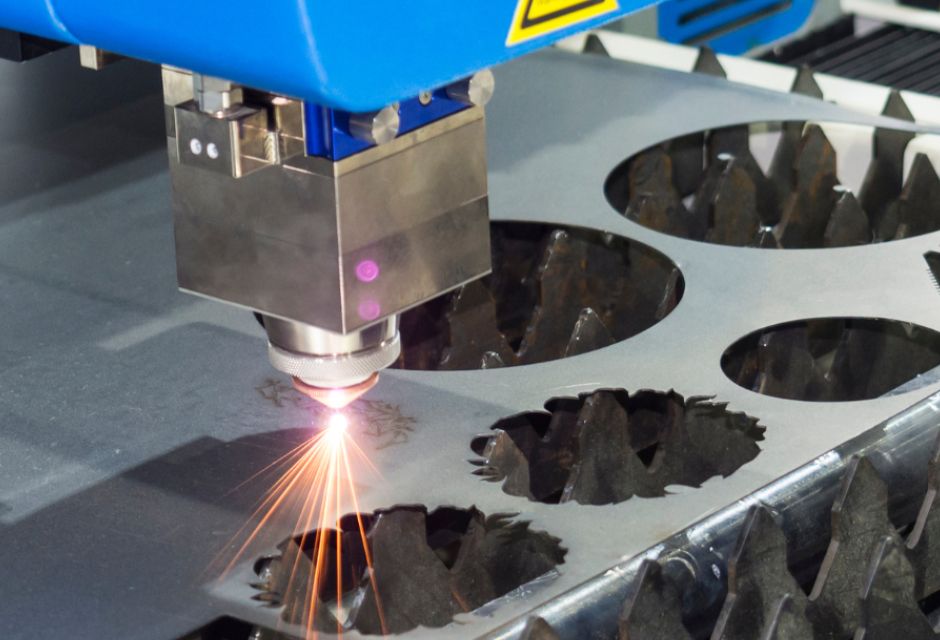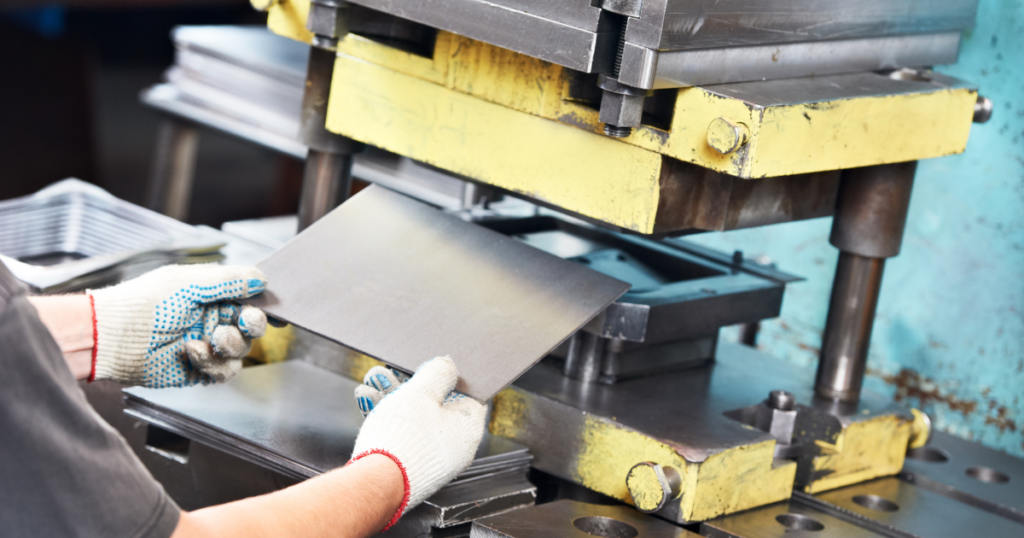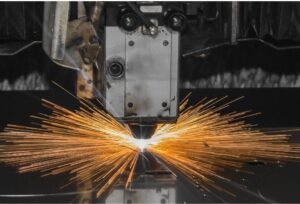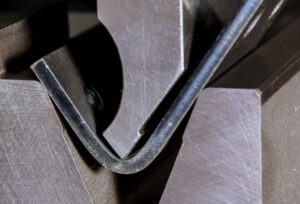
Sheet metal processing is a technology to create various shapes and products by processing thin metal sheets. Metal sheets such as iron, stainless steel, aluminum, and copper are mainly used to create products through welding, bending, and other processes.
This article explains the basic knowledge of such sheet metal processing types and their respective characteristics.If you are considering implementing sheet metal fabrication, please use this article as a guide to your options.
For more information about Taiga, click here.Table of Contents
Types of Sheet Metal Processing
There are various types of sheet metal processing depending on the application and purpose. Since each processing method has its own characteristics, it is important to select the most appropriate method according to the shape, precision, and material of the product.
Below is a detailed explanation of hand sheet metal, which is done by hand by craftsmen, and machine sheet metal, which uses machine tools.
Type 1|Hand sheet metal
Hand sheet metal refers to sheet metal fabrication performed by hand by skilled craftsmen.This method is mainly used for one-of-a-kind decorative items, custom-made products, and products that require detailed processing that is difficult to achieve with machines.
It can also be used for repairs and repairs. Tools used for hand sheet metal include hammers, special scissors, vises, and scriber.
Accuracy of processing and quality of the finished product depend greatly on the experience and technical skills of the craftsman, and therefore require skilled techniques.
Type 2|Machine sheet metal

Machine sheet metal is a method of sheet metal processing using specialized machines and equipment.Utilizing NC machines and automated processing machines, we can meet a wide range of needs from mass production to precision processing.
Compared to manual sheet metal working by hand, it is characterized by higher production efficiency and more stable processing accuracy. It has become an indispensable processing technology in many fields, including automotive parts, home appliances, and electronic devices.
Types of processing methods in sheet metal processing
In sheet metal processing, various processing methods are employed depending on the shape and application of the product. Here we introduce three typical types of processing methods in sheet metal processing.
- Laser Processing
- Tarepan processing
- Types of Bending Processes
Laser Processing
Laser processing is a method of cutting and drilling materials using a high-energy laser beam.High-precision and efficient machining is possible, and the machine is suitable for fabricating parts with complex shapes and fine details.
Another feature is that it is suitable for mass production due to its high-speed and high-precision characteristics. They are utilized in fields such as automobiles, aerospace, medical equipment, and electronics, and play an important role in sheet metal processing.
Tarepan processing

Turret punch processing is a processing method mainly used to punch or cut holes in metal sheets using a special machine called a turret punch press.
Various shapes, such as round holes, square holes, and slits, can be processed with a single machine, which features high-speed and efficient drilling and cutting.
On the other hand, it can be difficult to process metal sheets thicker than 3 mm.
Types of Bending Processes
Bending refers to the process of bending a metal sheet into an appropriate shape, mainly using machines such as press brakes and roll bending.The bending process can be used to reinforce the strength of the bending area or to form the required shape.
The following types of bending processes are available, and each method is described below.
- Partial bending (air bending)
- bottoming
- coining
Partial bending (air bending)
Partial bending (air bending) is a method of bending a metal sheet only at a certain angle, rather than bending it completely.
Specifically, it is also known as air bending because it floats in the air except for the three installation points (● portion in the image) as shown below.
While the use of partial bending makes it possible to design parts with complex shapes and functions, it is characterized by the fact that the accuracy of the accuracy depends on the thickness of the plate and the hardness of the metal.
bottoming
Bottoming is a method of forming a metal sheet into a specified angle or shape using a punch and die, where the sheet material is pressed against the bottom (bottom) of the die and bent.
The punch descends to the bottom of the die and presses the metal sheet completely against it, resulting in a very stable bending angle. Another feature is that the die can be shaped to allow not only bending but also forming at the same time.
On the other hand, it should be noted that the die can only be processed according to the shape of the die and that periodic maintenance is required.
coining
Coining is a processing method that applies greater pressure than bottoming and "presses" the metal sheet into the shape of the punch and die to achieve high dimensional accuracy and a good finish.
The metal plate is completely plastically deformed and internal stresses are equalized, thus suppressing springback (return to the original state) after machining.
It should be noted, however, that coining requires very high pressure, so a dedicated and powerful press is needed, and that the life of the machine may be shortened due to severe wear of the die.
Criteria for selecting the type of sheet metal fabrication
Here are four criteria for selecting a type of sheet metal fabrication.
- Required accuracy
- production output
- cost
- Material type and thickness
Required accuracy
For cost and processing efficiency, it is necessary to separate the type of sheet metal processing between highly precise and general precision.
When high precision is required, precision sheet metal processing is selected because of the delicate finish required.
The standard for precision sheet metal processing is a dimensional tolerance of ±0.1mm to ±0.05mm or less. Because of its high level of precision, it is used in medical equipment, aerospace, automobiles, electronics, and other fields.
On the other hand, for general accuracy, normal sheet metal fabrication will not be a problem.
production output
In sheet metal fabrication, production volume is one of the key criteria in choosing a fabrication method.
For mass production, efficiency and cost reduction are top priorities, so machine sheet metal processing such as laser processing and turret punching are suitable.
On the other hand, for small-lot production and one-of-a-kind items, flexibility and low initial investment are important, so hand sheet metal and precision sheet metal fabrication would be suitable.
cost
When choosing a sheet metal fabrication, cost is also an important indicator, as each fabrication method has different factors such as initial investment, material cost, processing cost, and labor cost.
If you want to keep costs down, choose general sheet metal fabrication.This is because sheet metal fabrication in general produces parts with simple shapes, which means shorter processing times and lower manufacturing costs.
Precision sheet metal fabrication is selected when high precision or complex shapes are required and cost is a secondary consideration.
Material type and thickness
Material type and sheet thickness are also important factors in choosing the type of sheet metal fabrication.
Because,Ease of bending and finishing systems during processing vary depending on the type and thickness of the material.From.
For thin materials, laser processing is suitable because of its high-speed cutting capability. For thicker materials, on the other hand, shearing and tarepanning are suitable because they require a great deal of force and specialized equipment for processing.
Summary
This article has described in detail the different types of sheet metal fabrication.
Sheet metal processing is a technique for fabricating thin metal sheets into various shapes, and is classified into "manual sheet metal" and "mechanical sheet metal" using machines. Hand sheet metal is suitable for custom-made products and repairs, while machine sheet metal is good at mass production and high-precision processing.
Processing methods include laser processing for complex shapes, turret punching for high-speed drilling, and bending for superior angular accuracy.
Taiga" is the supplier of a small number of products
Taiga" is a manufacturing platform for component remanufacturing and high-mix low-volume production. This allows for shorter delivery times and reduced costs, thereby improving the efficiency of the manufacturing site.
If you are considering manufacturing parts utilizing sheet metal fabrication, please contact us.Taiga."Taiga is a free service that allows you to consult with experienced contractors.
We can efficiently proceed with the development of difficult or new parts, small-lot production, prototyping, and mass production while keeping costs low.
For more information about Taiga, click here.
 0120-987-742
0120-987-742


